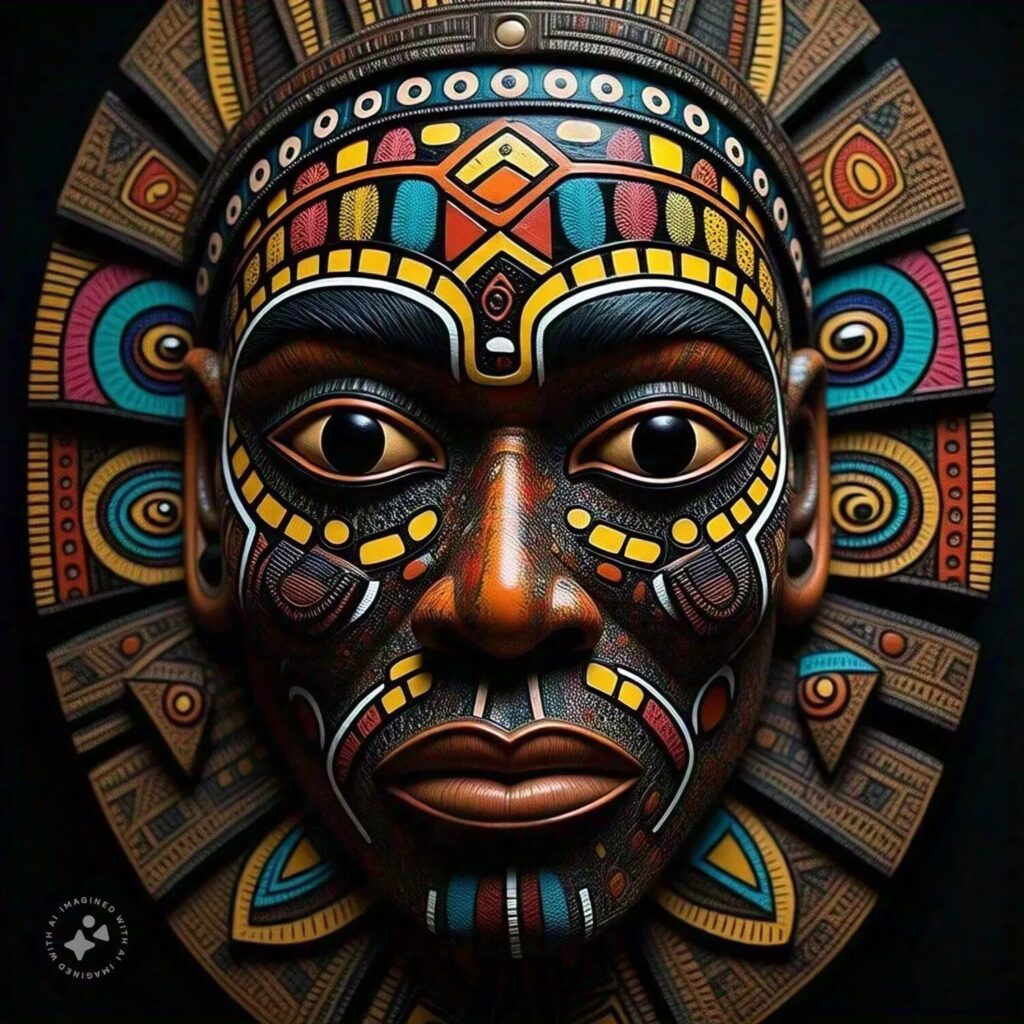Introduction

Imagine stepping into a dimly lit room where rhythmic drums pulse like a heartbeat, and figures clad in vibrant attire move in entrancing patterns. Central to this scene is a striking African mask, its carved features radiating power and mystery. African masks are not mere decorations—they are windows into the soul of African tribal rituals, beliefs, and artistry. In this journey, we will explore their origins, meanings, and enduring legacy in African culture and beyond.
The Origins of African Masks
The Role of Masks in Early African Societies
African masks have roots that stretch back thousands of years. They were integral to tribal life, serving as tools for communication with ancestors, spirits, and deities. Each mask carried a unique significance, often tied to a specific ritual or belief.
The Influence of Geography
The vast diversity of Africa’s landscapes influenced the design and use of masks. From the rainforests of West Africa to the deserts of the Sahara, masks reflected the environment, materials available, and the culture of each tribe.
The Spiritual Significance of African Masks
Masks as Gateways to the Spirit World
In many African traditions, masks were believed to bridge the human and spiritual realms. When worn during rituals, they allowed the wearer to embody spirits, ancestors, or mythical beings.
The Concept of Animism
The belief in animism where natural objects, animals, and ancestors possess spiritual essence shaped the creation and use of masks. Masks often symbolized these spirits, offering a tangible connection to the unseen.
The Artistry Behind African Masks
Materials and Craftsmanship
African masks were crafted from materials such as wood, bronze, ivory, and clay. Artisans dedicated immense skill and time to their creation, ensuring every detail aligned with the mask’s spiritual purpose.
Symbolism in Design
The shapes, patterns, and colors of masks were not arbitrary. Each element held symbolic meaning, representing tribal identity, spiritual themes, or natural elements like animals and plants.
Types of African Masks
Face Masks
Face masks, the most common type, were worn directly over the face. They often depicted human, animal, or mythical forms and were used in ceremonies like initiation rites or funerals.
Helmet Masks
Helmet masks covered the entire head, creating a larger-than-life presence. These were commonly used in masquerades to evoke awe and reverence.
Headdress Masks
Headdress masks were worn atop the head, often accompanied by elaborate costumes. They symbolized communal values, fertility, or historical events.
Masks in Tribal Rituals
Initiation Ceremonies
Masks played a central role in initiation rituals, marking transitions from childhood to adulthood. The masks represented ancestors or deities guiding initiates into their new roles.
Harvest Festivals
During agricultural festivals, masks symbolized gratitude to spirits for a bountiful harvest and sought their blessings for future prosperity.
Healing and Protection Rituals
Certain masks were used in rituals to heal the sick or protect the community from harm. These masks embodied powerful spirits believed to ward off evil.
The Social Role of African Masks
Masks as Storytellers
African masks were used to narrate myths, legends, and historical events. Through dance and performance, they brought stories to life, preserving oral traditions.
Fostering Unity
Rituals involving masks fostered a sense of community. They united participants in shared beliefs and experiences, strengthening tribal bonds.
Animal Symbolism in African Masks
The Lion: Strength and Leadership
The lion, often depicted in masks, symbolized courage and authority. It was associated with tribal leaders and warriors.
The Antelope: Fertility and Agriculture
Antelope masks represented fertility and were commonly used in harvest ceremonies. Their design reflected grace and the importance of sustenance.
The Owl: Wisdom and Mystery
Owls symbolized wisdom and the connection to the spirit world. Masks featuring owls were often used in divination rituals.
Also Read:The Real Housewives Effect: How Reality TV Shapes Our Views on Relationships
The Role of Dance in Mask Rituals
Movement as a Spiritual Expression
Masks were rarely static; they came alive through dance. Performers used rhythmic movements to invoke the mask’s spiritual power and convey its message.
Interaction with the Audience
Dances involving masks engaged the audience, creating a communal experience. The energy of the performance strengthened the spiritual connection between the mask and its observers.
The Legacy of African Masks
Influence on Modern Art
African masks inspired many renowned artists, including Pablo Picasso and Henri Matisse. Their bold designs and abstract forms revolutionized modern art movements like Cubism.
Masks in Contemporary Culture
Today, African masks are celebrated in museums, galleries, and festivals worldwide. While often admired for their aesthetics, their cultural and spiritual significance remains a focal point.
Misunderstandings and Appropriation
The Danger of Viewing Masks as Decor
While African masks are visually stunning, they are more than decorative items. Reducing them to mere art objects can strip away their cultural and spiritual meaning.
Addressing Cultural Appropriation
The commodification of African masks raises questions about respect and ownership. Understanding their context is essential to honoring their origins.
Preserving the Heritage of African Masks
The Role of Tribal Elders
Elders in African communities play a key role in preserving the traditions surrounding masks. They pass down stories, rituals, and craftsmanship to future generations.
Museums and Education
Museums and cultural organizations worldwide are working to educate audiences about the history and significance of African masks, ensuring their legacy endures.
Conclusion
African masks are far more than artistic creations—they are profound expressions of spirituality, identity, and history. Each mask tells a story, embodying the beliefs and traditions of the people who created it. By understanding and appreciating the cultural depth of African masks, we can glimpse the rich tapestry of African heritage and honor the timeless wisdom they represent.
Also Read: The History of Free Love: How the Sexual Revolution Shaped Modern Relationships
FAQs
What is the purpose of African masks?
African masks serve spiritual, ceremonial, and social purposes. They connect wearers to ancestors, deities, and natural forces during rituals and festivals.
Q2: What materials are used to create African masks?
African masks are crafted from materials such as wood, bronze, ivory, and clay, often embellished with paint, beads, or raffia.
Q3: How are African masks used in rituals?
Masks are worn during dances, ceremonies, and performances to invoke spirits, narrate stories, or mark significant life transitions.
Q4: Why are African masks considered spiritual?
They embody the presence of spirits or ancestors, serving as a bridge between the physical and spiritual worlds in many African traditions.
Q5: How can we appreciate African masks respectfully?
Appreciate them within their cultural and spiritual context. Avoid reducing them to decorative objects and learn about their origins and significance.


